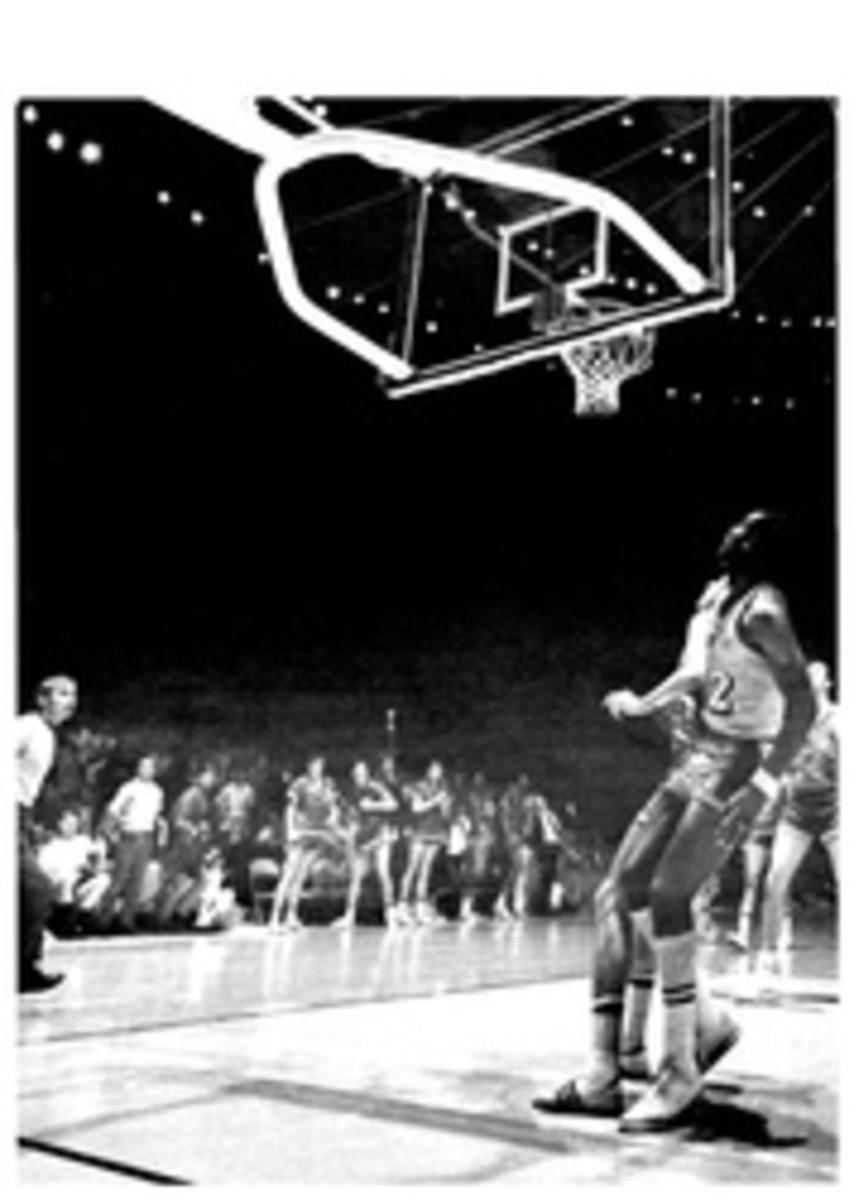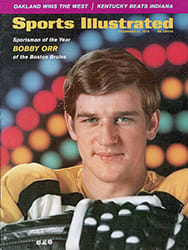
Elementary, My Dear Hans
In the 1890s few people in the Swiss Alps had ever heard of the sport they called "skiing" far to the north in Scandinavia. It was not surprising then that the arrival of three men on—or, rather, just off—long Norwegian runners caused something of a sensation among the tourists and natives in the small Swiss mountain village of Arosa late one morning in 1894.
Two of the men, Tobias and Fritz Branger, were themselves Swiss—the proprietors of a sporting-goods shop in Davos, a village on the far side of the Furka Pass. The other was a 34-year-old Briton, a physician and part-time short-story writer who had recently triggered a campaign of bitter vilification against himself throughout the English-speaking world by deliberately killing off one of the best-loved characters ever created in English fiction: Sherlock Holmes. The traveler to Arosa had killed Holmes simply because he was sick and tired of him, but his readers were not. And that, possibly, is why his friend Tobias Branger identified Dr. Doyle in the local hotel register not as physician or as author but as D. Conan Doyle, Sportesmann (sic).
It was an accurate description. Glad to be free of Holmes and his burbling sidekick, Watson, and sure that the clean mountain air was having a restorative effect on the tubercular lungs of his beloved wife Louise, Dr. Doyle, a rugged 6-footer, was having a fine time in Switzerland exploring the possibilities of a relatively unknown sport. Neither he nor his two friends had ever laced on a ski up to a few weeks before, and their perilous cross-country run over the 9,000-foot-high pass from Davos, where Doyle's wife was recuperating, to Arosa marked the first time anyone had crossed the pass in wintertime by any means. It was an important first in the establishment of skiing as a sport in Switzerland and it made a significant pioneer of Doyle himself.
A sports enthusiast of many dimensions, the famed author, who was forced by popular demand to revive his dead detective some years later, admitted wit Flout undue modesty in his autobiography, Memories and Adventures: "There is one form of sport in which I have, I think, been able to do some practical good, for I can claim to have been the first to introduce skis into the Grisons division of Switzerland, or at least to demonstrate their practical utility as a means of getting across in winter from one valley to another.
"It was in 1894 that I read Nansen's [Fridtjof Nansen, the Norwegian explorer] account of his crossing of Greenland, and thus became interested in the subject of skiing."
Doyle became acquainted with the Branger brothers in Davos, and he told them about this new sport. Both brothers knew something in theory about skiing and were interested in trying it out. Skis, of course, were not obtainable in Switzerland and the trio had to order three pairs from Norway.
The skis of that era tended to be over-long and somewhat heavy, with no steel edges to hold them true. The bindings were far different from those of today. They consisted for the most part of iron or hard leather flanges linked by straps that supported the toe of a boot and some form of leather thong that held the heel.
When the skis arrived, Doyle and his two friends tried them out on some minor hills around Davos. In Doyle's recollections these early efforts "afforded innocent amusement to a large number of people who watched our awkward movements and complex tumbles."
The Brangers learned much faster than Doyle, but the Englishman was an all-round good athlete and soon became almost as adept as his friends.
After several weeks of practice the three novices felt they had acquired enough expertise to tackle something more difficult: a climb and descent of the Jacobshorn, a fairly high eminence close to the Davos hotel where the Doyle family was residing.
They started on this venture in fine weather shortly after breakfast one day early in March. They carried their skis on their shoulders until they had left the base of the mountain.
"Once in the open we made splendid progress," Doyle recalled. "We had the satisfaction of seeing the flags in the village dipped in our honour when we reached the summit. But it was only in returning that we got the full flavor of skiing. In ascending you shuffle up by long zigzags, the only advantage of your footgear being that it is carrying you over snow which would engulf you without it. But coming back you simply turn your long toes and let yourself go, gliding delightfully over the gentle slopes, flying down the steeper ones, taking an occasional cropper, but getting as near to flying as any earthbound man can. In that glorious air it is a delightful experience."
Doyle's wife and their children were among the many spectators who observed from balconies and other vantage points the progress of the three men. Their safe return was roundly cheered.
Encouraged by this success, the trio decided its next goal would be the Davos to Arosa pass, a much tougher proposition than the Jacobshorn. Doyle says they wanted "'to show the utility" of their Jacobshorn achievement by opening up communications with a village on the other side of the pass.
Arosa lies in a valley parallel to that in which Davos is located. It could be reached during winter months only by a very long and roundabout railway journey. No one had ever tried to cross the pass on foot in wintertime.
Doyle and his friends started out shortly after 4 a.m. one day in late March, with knapsacks containing food on their backs. Maps were not necessary since the Branger brothers knew the topography of the area well. All had adequate winter clothing, for the air was biting. The brothers wore simple woolen caps, sweaters and thick trousers. Their lower legs were encased in puttees and their feet in heavy socks and boots. Doyle was more sartorially impressive, wearing, in addition to his sweater, an expensive jacket of the finest Harris tweed and baggy knickerbockers of the same material, topped by a flat cap and a colorful plaid scarf. As usual, he brought along one of his favorite curved pipes and a pouch filled with tobacco.
"A great pale moon hung in the violet sky overhead," he wrote, "brilliant with such a canopy of stars as can be seen only in the tropics or the higher Alps. I have no doubt that what we did would seem absurdly simple to Norwegians or others who were apt at the game, but we had to find things out for ourselves and it was sometimes rather terrifying."
By 7:30 in the morning the trio was slowly zigzagging upward in the lower area of the pass, moving through shadow areas not yet touched by the sun as it tinted the summits. Ahead of them was a 60-degree slope ending in a 1,000-foot perpendicular precipice. The slope was ice, but it had to be crossed. They could not wait for the sun to soften it. Each man had to advance very cautiously, stamping down hard with his skis and planting his poles carefully.
"On our left the snow slope ended in this chasm from which a blue smoke or fog rose in the morning air," Doyle wrote. "I hardly dared look in that direction, but from the corner of my eye I saw the vapour of the abyss. I stamped along and the two gallant Switzers got on my left, so that if I slipped the shock would come upon them. We had no rope by which we could link up."
Reaching the highest point in the pass, they halted briefly. Warmed by a bright sun, they munched on bread, cheese and chocolate bars, washed down by some kirsch that Tobias carried in a small canteen. All were elated. From here on it would be downhill. They took off happily in the direction of Arosa, whose toylike hotels and chalets could be seen in the fir woods below. The going was generally smooth in fine powder until they reached the crest of a slope just outside the village. At a warning gesture from Tobias, who was in front, all came to an abrupt halt. It was lucky they did, for ahead was an appallingly steep slope, its base close to the outer fringe of the village.
People below had spotted the skiers above and were watching them curiously, wondering what would happen next.
"It looked impassable but the Brangers had picked up a lot in some way of their own," Doyle wrote. "They took off their skis, fastened them together with a thong and on this toboggan they sat, pushing themselves over the edge and going down amid a tremendous spray of flying snow."
Tobias went first on his pair of skis and his brother followed in the same fashion.
"When they had reached safety [amid the cheers and laughter of onlookers] they beckoned me to follow. I had done as they did and I was sitting on my skis preparatory to launching myself when a fearsome thing happened, for my skis shot from under me, flew down the slope and vanished in huge bounds among the snow mounds beyond.
"It was a nasty moment and the poor Brangers stood looking up at me from some hundreds of feet below in a dismal state of mind. However, there was no possible choice as to what to do, so I did it. I let myself go over the edge and came squattering down, with legs and arms extended to check the momentum. A minute later I was rolling covered with snow at the feet of my guides and my skis were found some hundreds of yards away, so no harm was done after all."
There was only a single sad note in this spectacular tale. The Harris tweed covering Doyle's posterior was in shreds, his underwear showing. "My tailor," he said, "tells me that Harris tweed cannot wear out. This is a mere theory and will not stand a thorough scientific test. For the remainder of the day I was happiest when I was nearest the wall."
Shortly thereafter Doyle returned to England, but before leaving Davos he uttered some prophetic words regarding Switzerland's skiing future.
"You don't appreciate it as yet," he said, "but the time will come when hundreds of Englishmen will come to this country for the ski-ing season."
And although he considered skis the most "treacherous and capricious lengths of wood on earth," he had some perceptive praise for the sport's psychological aspects. "On any man suffering from too much dignity a course of skis would have a fine moral effect," he said.
Whether Doyle himself ever tried skiing again is not certain. In any case, the skis he used at Davos became a permanent fixture in a corner of the study at his home in England.

